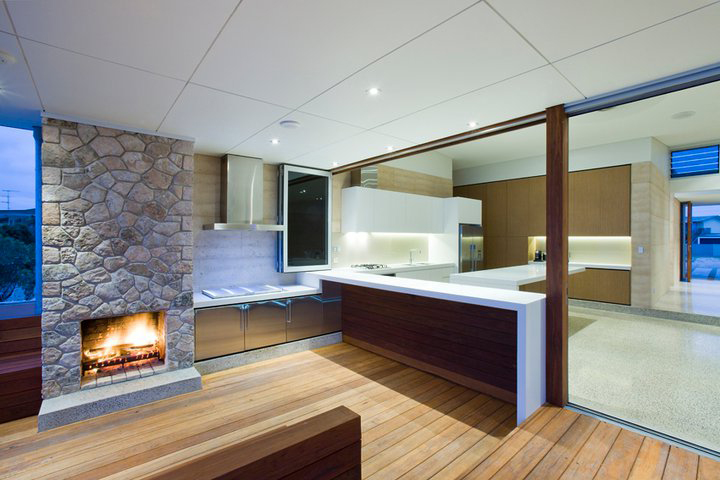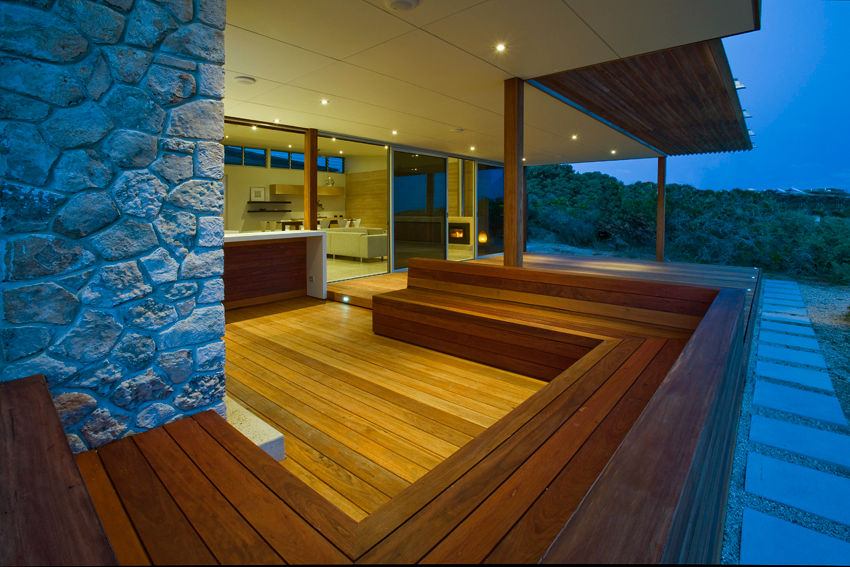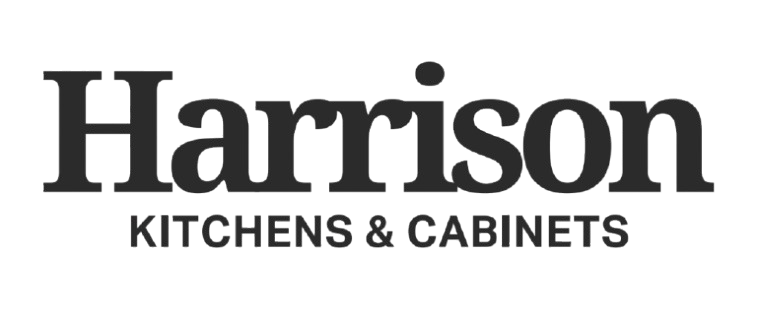Australia's climate and outdoor lifestyle make it the perfect place for outdoor entertaining. It's no surprise that outdoor kitchens have become one of our most requested projects at Harrison Kitchens & Cabinets. A well-designed outdoor kitchen extends your living space, provides a focal point for gatherings, and can significantly increase your property's value. This comprehensive guide will walk you through everything you need to consider when planning your ideal outdoor culinary space.

1. Climate Considerations and Placement
The first step in designing your outdoor kitchen is selecting the right location. In Australia's varied climate, you'll need to account for sun exposure, prevailing winds, and seasonal changes. We recommend positioning cooking areas where smoke won't blow into your home or seating areas. Consider how the space will function in different weather conditions—will you need shelter from summer heat or winter rain? Many of our clients opt for partial roofing or retractable awnings to maximize year-round usability.
Proximity to your indoor kitchen is another crucial factor. While you don't want the outdoor kitchen directly against the house (for smoke and heat reasons), placing it too far away makes food preparation and serving challenging. For most properties, positioning the outdoor kitchen within 15-20 steps of your indoor kitchen creates the ideal balance. Consider the view from both the kitchen and dining areas as well—both from within the outdoor kitchen looking out, and from other spaces looking toward it.

2. Layout and Workflow
Just like indoor kitchens, outdoor cooking spaces benefit from thoughtful workflow design. We apply the same principles of the kitchen work triangle (connecting cooking, preparation, and storage areas) but adapt them for outdoor use. Most successful outdoor kitchens include zones for food preparation, cooking, serving, and cleaning up. The size and arrangement of these zones depend on how you plan to use the space—occasional casual barbecues require a different setup than regular gourmet entertaining.
When planning your layout, consider the specific cooking equipment you'll install. Built-in BBQs typically require a minimum of 900mm countertop on either side for safe and comfortable operation. If you're including multiple cooking appliances, arrange them so that two people can cook simultaneously without crowding each other. Many of our designs now feature two distinct cooking areas: one for the primary chef and another for a helper or for specialized cooking equipment like pizza ovens or smokers.
3. Weather-Resistant Materials
Material selection is perhaps the most critical factor in creating an outdoor kitchen that will stand the test of time. Unlike indoor kitchens, outdoor cooking spaces must withstand extreme temperature fluctuations, UV exposure, rain, and in coastal areas, salt exposure. This harsh environment demands materials specifically designed for outdoor use.

For cabinetry, we primarily use marine-grade stainless steel, powder-coated aluminum, or specialized high-density polyethylene (HDPE) designed for outdoor use. Traditional cabinet materials like MDF or plywood, even when treated, simply won't survive the elements. Countertops need to be equally durable—natural granite, concrete, porcelain, and composite materials specifically rated for outdoor use are our go-to options. We typically avoid marble and quartz, which can fade, stain, or crack when exposed to the elements.
Flooring deserves special attention as well. It needs to be slip-resistant, durable, and able to withstand spills of oils and foods. Porcelain tile, natural stone, and stamped concrete all offer excellent durability while complementing the overall design aesthetic. Ensure any flooring has proper drainage to prevent water pooling after rain or cleaning.
4. Appliance Selection
The appliances you choose will define what's possible in your outdoor kitchen. Beyond the standard BBQ, consider whether you want additional cooking options like side burners, pizza ovens, kamado grills, or smokers. Refrigeration is another key consideration—outdoor-rated refrigerators, beverage coolers, or ice makers can eliminate trips back to the house during entertaining. Some clients also opt for specialized storage solutions like kegerators for draft beer or wine fridges.
When selecting appliances, look for those specifically rated for outdoor use with proper weather resistance. Ensure they have the capacity to meet your entertaining needs—a BBQ that's too small for your regular gatherings will become a frustration rather than an asset. We've found that clients often underestimate their cooking space needs, so we typically recommend going slightly larger than your initial estimate, particularly for the primary cooking surface.
5. Utilities and Infrastructure
The infrastructure supporting your outdoor kitchen is as important as its visible elements. Planning for electricity, gas, water, and drainage requires careful consideration and professional installation. Electrical needs might include outlets for appliances, feature lighting, task lighting, and possibly heating elements for cooler evenings. Licensed electricians should install weather-rated, GFCI-protected outlets in locations that minimize exposure to the elements.
Gas connections for BBQs and other cooking appliances must comply with Australian safety standards and be installed by licensed gas fitters. If natural gas isn't available, plan for secure storage of LPG bottles in ventilated areas away from heat sources. For water supply, consider both hot and cold lines for sinks, and ensure proper drainage that meets local regulations. We often recommend slightly sloped countertops and integrated drainage systems to handle rain and spillage.
6. Comfort and Entertainment Features
The most successful outdoor kitchens integrate cooking functionality with entertainment features that encourage relaxation and social interaction. Consider comfortable seating areas positioned to allow conversation with the chef while cooking. Bar-height counters with stools create casual dining opportunities, while dedicated dining tables accommodate more formal meals.
Audio-visual elements like weather-resistant speakers or televisions can enhance the entertainment value, particularly for sports enthusiasts. Thoughtful lighting design extends the usability of your kitchen into the evening hours—combine functional task lighting over cooking and prep areas with ambient lighting for dining and socializing. For year-round comfort, integrate heating options for cooler months (like strip heaters or fire features) and cooling solutions for summer (ceiling fans or misting systems).
7. Storage and Convenience Features
Adequate storage prevents constant trips back to the house and keeps your outdoor kitchen organized. Weather-tight drawers and cabinets protect utensils, serving ware, and non-perishable ingredients from the elements. Include specialized storage for fuel, grilling tools, and cleaning supplies. Many of our clients now request dedicated waste management solutions, including space for recycling and composting.
Convenience features make outdoor cooking more enjoyable. Consider adding a small herb garden adjacent to the kitchen for fresh ingredients. Paper towel holders, spice racks, and tool hooks keep essentials within easy reach. We often install integrated cutting boards and food prep areas that can be removed for cleaning or storage during off seasons.
At Harrison Kitchens & Cabinets, we understand that an outdoor kitchen is a significant investment. Our design process begins with understanding how you plan to use the space, then creating a custom solution that balances functionality, durability, and aesthetic appeal. Whether you're envisioning a simple cooking station or a comprehensive outdoor entertainment area, we bring the same attention to detail and quality craftsmanship that has defined our indoor kitchen projects for over two decades.
Ready to transform your outdoor space into a culinary oasis? Contact us today to schedule a consultation with one of our outdoor kitchen specialists.
Go Back to Blogs

